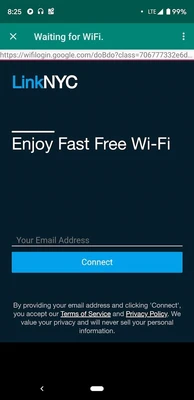
Captive Portal Login
- 5.0 RATINGS
- 43.00MB DOWNLOADS
- 4+ AGE
About this app
-
Name Captive Portal Login
-
Category TRAVEL AND TRANSPORTATION
-
Price Free
-
Safety 100% Safe
-
Version 14-11022343
-
Update Nov 27,2024

Captive Portal Login: Understanding the Web Authentication Gateway
In the digital age, accessing the internet via public Wi-Fi hotspots in places like malls, airports, hotels, and cafes has become a common practice. However, before granting internet access, many of these networks utilize a technology known as Captive Portal Login. This article aims to demystify what Captive Portal Login is, how it works, and its significance in modern networking.
A Captive Portal is essentially a web page that users must visit and interact with before being granted access to the internet through a public network. When a user connects to a Wi-Fi network with a Captive Portal, they are redirected to a specific web page that requires them to perform certain actions, such as agreeing to terms and conditions, entering login credentials, or acknowledging advertisements. This process serves multiple purposes, including user authentication, policy acceptance, and revenue generation through advertisements.
The workflow of Captive Portal Login often involves a series of automated steps. When an iOS device connects to a network with a Captive Portal, it sends an HTTP/1.0 request to a predefined URL, typically http://www.apple.com/library/test/success.html. If the response matches the expected result, indicating that the network is accessible without further restrictions, no Captive Portal page is displayed, and the Wi-Fi icon appears in the status bar. However, if the response indicates the presence of a Captive Portal (CWP), the device automatically opens a web page and retries the request using HTTP/1.1, leading to the display of the Login page.
In educational institutions, for example, the Wi-Fi might use a web authentication method where connecting to the Wi-Fi network automatically prompts a browser to open a page at an address like http://captive.apple.com/, followed by the server login page. Users then enter their username and password to gain internet access. While this process can be seamless on iPhone devices due to automatic form filling, it may be less convenient on macOS, where the login page might repeatedly pop up and require manual input.
Captive Portals not only authenticate users but also serve as a security measure. Many networks with Captive Portals are equipped with antivirus and firewall programs to protect users' devices from potential attacks, whether from the internet or other devices on the same network. Additionally, Captive Portals can minimize bandwidth abuse, known as bandwidth twisting, by implementing controls such as limiting file download sizes, restricting the number of simultaneous downloads, or blocking websites commonly used for large file downloads.
In conclusion, Captive Portal Login is a crucial technology that facilitates secure and controlled internet access in public and private networks. By requiring users to interact with a web page before granting access, Captive Portals ensure that users are authenticated, policies are accepted, and the network remains secure. While it may sometimes pose minor inconveniences, such as repeated login prompts, the overall benefits in terms of security and network management far outweigh these minor drawbacks.














